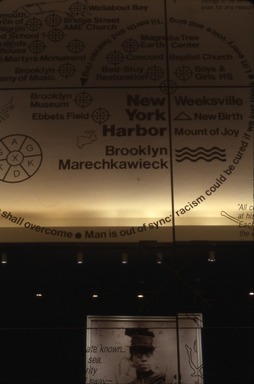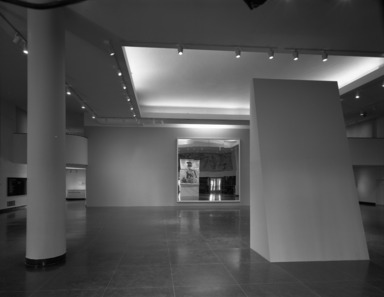

The New Merengue, January 31, 1992 through May 03, 1992 (Image: PHO_E1992i001.jpg Brooklyn Museum photograph, 1992)

The New Merengue, January 31, 1992 through May 03, 1992 (Image: PHO_E1992i002.jpg Brooklyn Museum photograph, 1992)

The New Merengue, January 31, 1992 through May 03, 1992 (Image: PHO_E1992i003.jpg Brooklyn Museum photograph, 1992)
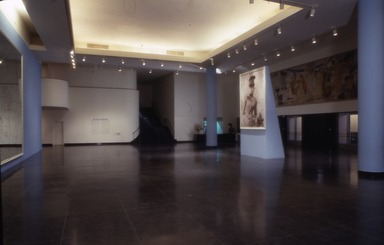
The New Merengue, January 31, 1992 through May 03, 1992 (Image: PSC_E1992i028.jpg Brooklyn Museum photograph, 1992)
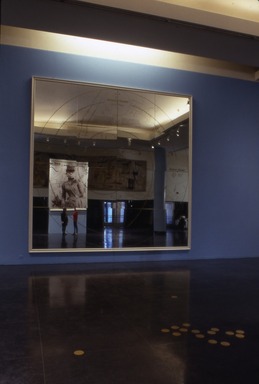
The New Merengue, January 31, 1992 through May 03, 1992 (Image: PSC_E1992i029.jpg Brooklyn Museum photograph, 1992)

The New Merengue, January 31, 1992 through May 03, 1992 (Image: PSC_E1992i038.jpg Brooklyn Museum photograph, 1992)
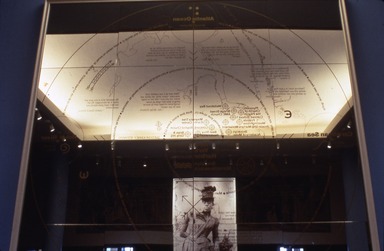
The New Merengue, January 31, 1992 through May 03, 1992 (Image: PSC_E1992i039.jpg Brooklyn Museum photograph, 1992)
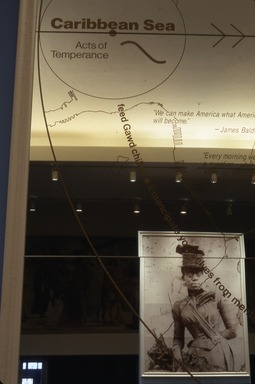
The New Merengue, January 31, 1992 through May 03, 1992 (Image: PSC_E1992i040.jpg Brooklyn Museum photograph, 1992)
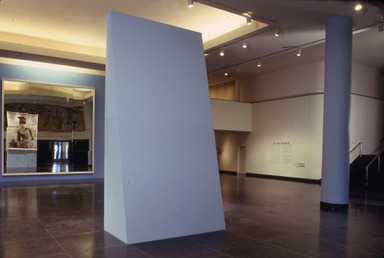
The New Merengue, January 31, 1992 through May 03, 1992 (Image: PSC_E1992i041.jpg Brooklyn Museum photograph, 1992)

The New Merengue, January 31, 1992 through May 03, 1992 (Image: PSC_E1992i042.jpg Brooklyn Museum photograph, 1992)
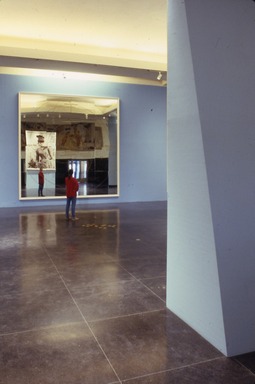
The New Merengue, January 31, 1992 through May 03, 1992 (Image: PSC_E1992i043.jpg Brooklyn Museum photograph, 1992)
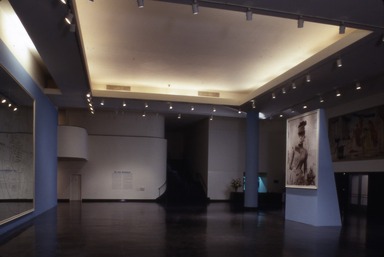
The New Merengue, January 31, 1992 through May 03, 1992 (Image: PSC_E1992i044.jpg Brooklyn Museum photograph, 1992)
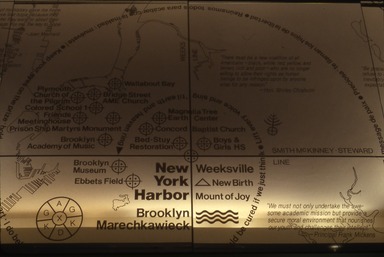
The New Merengue, January 31, 1992 through May 03, 1992 (Image: PSC_E1992i045.jpg Brooklyn Museum photograph, 1992)
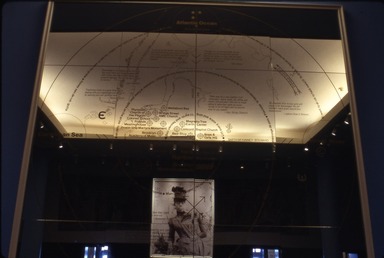
The New Merengue, January 31, 1992 through May 03, 1992 (Image: PSC_E1992i046.jpg Brooklyn Museum photograph, 1992)

The New Merengue, January 31, 1992 through May 03, 1992 (Image: PSC_E1992i047.jpg Brooklyn Museum photograph, 1992)
The New Merengue
-
December 1, 1991
PRESS PREVIEW: Thursday, January 30, 1992, 6:00-9:00 p.m. Special motorcoach service will be available to the Museum from Manhattan, departing from the Central Park side of the Plaza Hotel at 5:30 p.m. and from the southeast corner of West Broadway and Houston at 6:00 p.m. Reservations are required. Please RSVP to the Public Information office, (718) 638-5000, ext. 330/331.
The migration of Caribbean and African Americans to Brooklyn is the subject of The Brooklyn Museum’s twenty-ninth Grand Lobby project, The New Merengue, which opens on January 31 and continues through May 3, 1992. The site-specific work will be designed by sculptor Houston Conwill (b. 1947), architect Joseph De Pace (b. 1954), and poet Estella Conwill Majozo (b. 1949), three Harlem-based artists who have collaborated on projects for more than five years.
The New Merengue pulls together seemingly disparate elements—Caribbean music and dance, the blues, architectural components of Chartres Cathedral, geography, and numerology—into a coherent project that unites the movements of migration, pilgrimage, and the dance of the merengue. While Conwill, De Pace, and Majozo’s work has been called both modern and postmodern, they resist these art-historical labels and place their work in a genre they call “High Funk.” “High Funk,” they state, “is a deliberate contradiction in terms. It conjugates the high (the transcendent—metaphorically, the ancestral plane) with the low (the working, the funktional).”
The installation consists of a large mirrored map, or cosmogram, mounted on the back wall of the Grand Lobby, with Weeksville, the nineteenth-century Brooklyn community settled by African Americans, at the center. Situated between the Grand Lobby’s two columns will be a freestanding photograph of a young black woman from the 19th century. She is the symbolic ancestor of several of the individuals from Brooklyn quoted on the cosmogram, including Shirley Chisholm, Lena Horne, Ira Alridge, and Sammy Davis, Jr. The original tintype of this unknown woman was found in the late 1960s excavation of Weeksville and is called “The Weeksville Lady.” She, along with the viewer, is mirrored in the cosmogram and incorporated into the installation, thereby joining the pilgrimage taken by Brooklyn blacks.
At the crossroads of the cosmogram is Weeksville, now a part of Bedford-Stuyvesant. Placed about the cosmogram are fourteen other Brooklyn sites the artists call “spiritual signposts of African-American history and culture.” These sites, corresponding to the fourteen Stations of the Cross, include the original location of the Bridge Street Church, established in 1818 and a stop on the Underground Railroad; Wallabout Bay (now the site of the Brooklyn Navy Yard), where 11,644 Americans, both black and white, died on British prison ships during the Revolution; and Ebbets Field, where Jackie Robinson first played with the Brooklyn Dodgers in 1947, breaking the color barrier in major league baseball.
Conwill and Majozo are brother and sister and were born in Louisville, Kentucky. New York-born De Pace met Conwill in 1984 when they were Prix de Rome fellows at the American Academy in Rome. The trio have employed the cosmogram in other works, often with reference to a specific dance as in The New Cakewalk (1989) at the High Museum of Art, Atlanta, and The New Charleston (1991) at the Spoleto Festival in Charleston, South Carolina.
In conjunction with the exhibition there will be an artist-in-residence program, “Conversation with the Artists,” in which Conwill, De Pace, and Majozo, along with curator Brooke Kamin Rapaport, will give a slide presentation on their past and present collaborations. The program will be held Sunday, April 12, at 3 p.m., and is free with Museum admission.
The Grand Lobby project was organized by Brooke Kamin Rapaport, Assistant Curator of Contemporary Art, with the assistance of Pamela S. Johnson, a curatorial intern funded by the Lila Wallace-Reader’s Digest Fund. The exhibition and its associated Artist-in-Residence programs are made possible by the Lila Wallace-Reader’s Digest Fund.
Brooklyn Museum Archives. Records of the Department of Public Information. Press releases, 1989 - 1994. 01-06/1992, 097-99.
View Original
